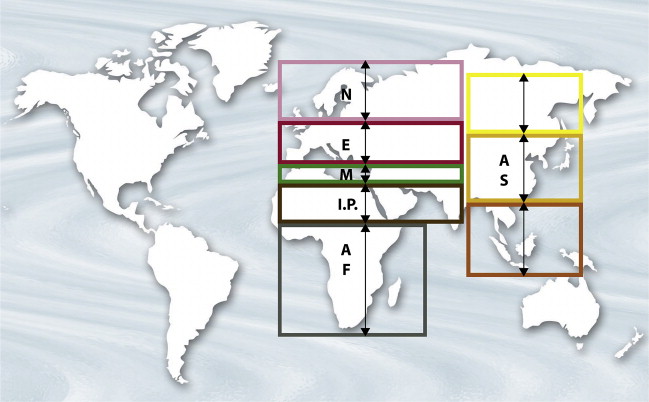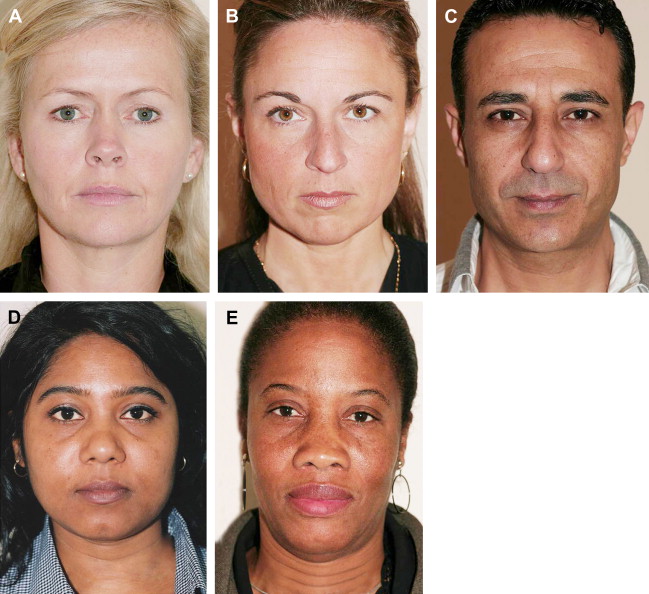Racial genetics play a significant role in determining a patient’s response to any skin treatment. Contrary to traditional skin classifications, the new genetico-racial classification takes into consideration the racial origins of patients, as manifested in both their skin color and their feature contour characteristics, rather than their skin color alone. According to this new classification, patients may belong to 1 of 6 categories, originating from the 3 ancient continents: Africa, Europe, and Asia. In this article the Asian category, as well as its subcategories, are approached in a radically different way. This new geneticoracial classification ushers in a “paradigm shift” in the way Asian patients are perceived before, during, and after skin treatments. The new geneticoracial classification advances that Asians are excellent candidates to most peels and laser treatments, as long as their genetic disposition and their anticipated responses to those treatments are understood and respected.
Current skin classifications, such as the “Fitzpatrick” or the “Obagi” ones, are mostly based on the skin color of patients contemplating whether to undergo a skin treatment. These classifications also take into consideration other characteristics of lesser importance, such as the ease of acquiring sunburn, skin oiliness and thickness, and so forth. Predicting the outcome of a peel or a laser treatment is supposedly tied to the depth of the skin color, escalating from very white, to white, to olive, to yellow, to brown, to black.
According to these traditional classifications, Asians are all lumped into the “yellow” category; this vaguely means that they are better candidates than the darker “brown” and “black” ones, but less so than the lighter “white” and “olive” ones. Asians are thus considered somewhat “below average” on the scale of candidate idealism while the very white are supposedly the best, and the black the worst.
The new skin classification presented herein, first suggested by Fanous and colleagues, is based on the patients’ hereditary baggage: their race with its accompanying particular genetic composition. This “genetico-racial” classification proposes that patients’ susceptibility and reaction to any skin treatment, whether it is a peel, a laser, a photo rejuvenation, and so forth, follow their genetic programming. Each race, therefore, comes with its genetic predisposition to any skin treatment.
The races and their origins
Our earliest ancestors are believed to have appeared in Africa, the primary ancient continent, around 4 million years ago. Only a million or so years ago, they wandered out of Africa and into the other 2 ancient continents: Europe and Asia. Later, the human race ventured out of those 3 ancient continents and into the relatively younger ones.
Most anthropologists agree that the different populations spread across the planet all come from the same African origins. Yet, if one examines the inhabitants of the 3 ancient continents (the “Blacks” in Africa, the “Whites” in Europe, and the “Asians” in Asia), one cannot help but wonder at the amazing variations between those 3 races in their skin colors, and especially in their features in terms of shape, size, and contour.
At this point, some intriguing questions come to mind: Why did the original African race metamorphose into 3 very dissimilar races? Furthermore, why does each one of these 3 races seem to be confined to mostly one continent? And, to further complicate the picture, why are the skin color and features lighter and finer respectively in the Northern parts of each continent, but gradually become darker and coarser as one moves more southward on each of those 3 continents?
The genetico-racial classification advances that the answer to the previous 3 puzzles is not a coincidence, but rather the product of evolutionary mechanisms. According to Darwin, Nature enhances the survival of species by retaining their valuable physical characteristics suited to a specific environment. Nature does so by favoring the procreation of the individuals carrying those characteristics, while at the same time eliminating the undesirable ones with unsuitable physical traits.
In other words, it is most likely that over the course of many hundreds of thousands of years, each of the 3 races underwent evolutionary physical changes in response to their new habitat. These slow changes explain why Africans maintained their dark, thick skin as a protective shield against the intense ultraviolet sun radiation, as well as their large nasal cavities as an air-cooling mechanism. On the other hand, the Northern Europeans developed the opposite characteristics in the form of a light, thin skin and narrow nasal airways to accommodate the cloudy, cold weather.
The genetico-racial categories
For the sake of simplicity, and for practical reasons, the 3 founding races, mainly the African, Caucasian, and Asian, are subdivided into 6 categories.
As one proceeds from north to south across the 3 ancient continents (Africa, Europe, and Asia), both the skin color and features change gradually and predictably, from lighter skin and finer features in the North to darker skin and coarser features in the South. As shown in Fig. 1 , the racial categories run in a North-to-South manner, vertically across Europe and Africa, and in a parallel vertical manner across Asia.

The characteristics of the 6 categories may be summarized as follows.
The Nordics ( Fig. 2 A) are individuals with Northern European roots (eg, Scandinavian, Irish). Nordics have thin pale white skin, fair hair, and fine features. Eyes are light brown, green, or blue.

The Europeans ( Fig. 2 B) are individuals with Central European roots (eg, France, Germany). The skin of Europeans is white with a slight tan, and their features are medium, neither too refined nor too coarse. Eyes are mostly brown, black, or gray.
The Mediterraneans ( Fig. 2 C) are individuals with Southern European (eg, Southern Italian, Greek) or Western Asian (eg, Turkish, Lebanese) roots. Mediterraneans are slightly darker than the Europeans, and their features are slightly coarser.
The Indo-Pakistanis ( Fig. 2 D) are individuals with Northern African (eg, Egyptian, Libyan, Tunisian) and Southern Asian (eg, Indian, Sri Lankan, Afghan) roots. Indo-Pakistanis have thick medium to deep brown skin and moderately coarse features.
The Africans ( Fig. 2 E) are individuals with Central African (eg, Sudanese, Ethiopian, Nigerian) or Southern African (eg, South African) roots. The skin of Africans is very thick and black, and their features are very coarse.
The Asians ( Fig. 3 ) are individuals with Eastern Asian roots. Asians form a separate North-to-South classification across the Eastern section of Asia.
Asians may be further subdivided into 3 subcategories.
Northern Asians ( Fig. 3 A), with roots in the northern part of Eastern Asia (eg, Mongolian, Northern Chinese, Northern Korean). The skin color of Northern Asians varies from white to one with a mild tan, and their features are mildly coarse.
Central Asians ( Fig. 3 B), with roots in the central part of Eastern Asia (eg, Japanese, Southern Chinese, Southern Korean). The skin of Central Asians has a medium tanned color, and their features are moderately coarse.
Southern Asians ( Fig. 3 C), with roots in the southern part of Eastern Asia (eg, Thai, Filipino, Vietnamese, Malaysian, Indonesian). The skin of Southern Asians is dark, varying from medium to dark brown; their features are coarse to very coarse.
Stay updated, free articles. Join our Telegram channel

Full access? Get Clinical Tree







